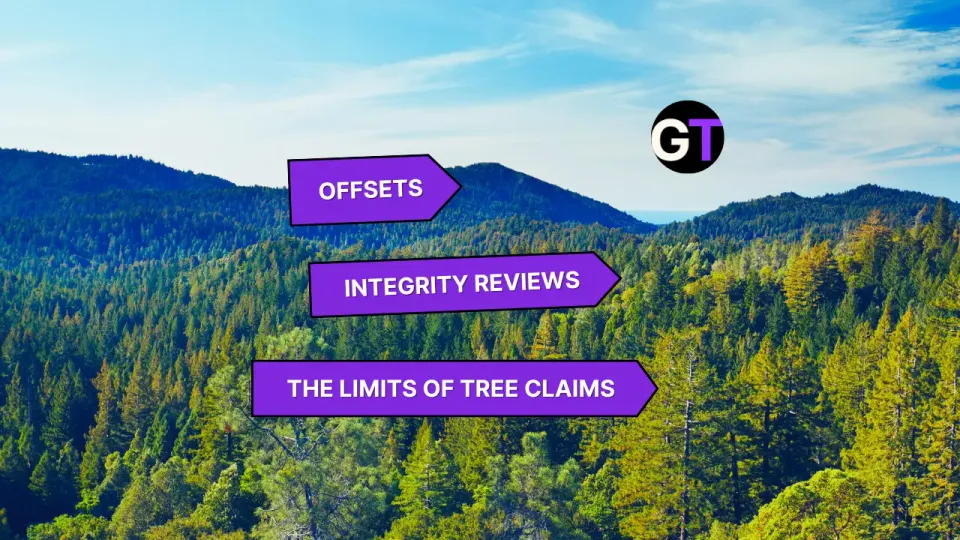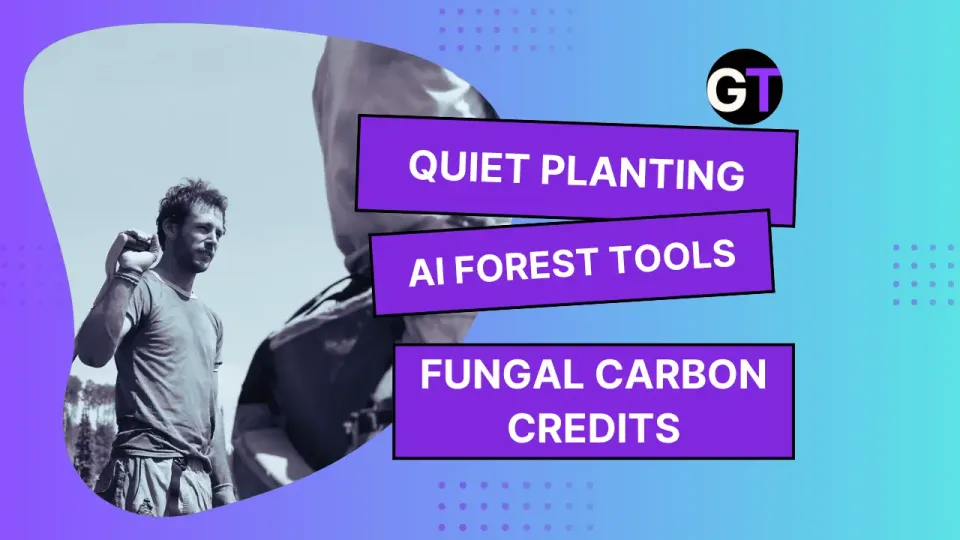Ground Truth Weekly Forest News, January 17
Ground Truth Weekly: Fen restoration, EU timber risks, reforestation transparency, Indigenous data, forest finance, & biodiversity credits.

Fen Restoration in Canada: Assessing 13 Years of Change
A new study examines fen restoration at an industrial peat extraction site in Quebec, testing three approaches: rewetting, rewetting with surface profiling, and rewetting with plant material introduction.
While vascular plants rebounded significantly, bryophyte recovery lagged, highlighting challenges in ecosystem restoration. The findings emphasize active rewetting's potential but caution against excessive flooding, which can hinder peatland species recovery.
How do you think technology can help bridge the gaps in environmental restoration studies like this one?
👉👉Read the full study in Science Direct
Europe’s Timber Shortfall: Risks of Outsourcing Logging Under EU Policies
Europe’s need to cut 132 million cubic meters of timber under the Green New Deal and LULUCF Regulation is creating a “logging spill,” with increased fellings in regions like North and South America, Asia, and China.
This shift may compromise biodiversity and climate resilience as logging moves to areas with weaker conservation practices. Experts warn that while the EU seeks sustainable forestry, the unintended global impacts highlight the need for better international mechanisms.
How can global cooperation mitigate the unintended consequences of regional conservation policies?
👉👉Read more in Wood Central
Reforestation Costs in New Brunswick: A Call for Transparency
A tree-planting initiative in New Brunswick by The Trees Remember offers a way to honor loved ones through reforestation, but its $27-per-tree cost has raised questions about transparency. While the project shares basic details like species and planting density, more information on geospatial data, tree survival rates, and cost breakdowns could better engage donors and highlight the initiative's unique aspects.
Would knowing exactly how your donations are being used make you more likely to contribute to environmental projects?
👉👉Read our coverage in Ground Truth
Indigenous Data Governance in Earth Science: Applying CARE Principles
A new study highlights the need for Indigenous Data Sovereignty (IDSov) in Earth systems science, emphasizing the adoption of CARE principles—Collective Benefit, Authority to Control, Responsibility, and Ethics.
By examining the National Ecological Observatory Network (NEON), the study proposes actionable steps for integrating Indigenous perspectives and knowledge into open data practices, fostering both ethical science and stronger Indigenous collaborations.
How do you see the intersection of open science and Indigenous knowledge shaping the future of environmental research?
👉👉Read the study in Nature
DIVERSE: Strengthening Forest Resilience with Functional Complex Networks
An upcoming webinar on February 26, 2025, will spotlight the DIVERSE project and its innovative approach to forest management using Functional Complex Networks. This method leverages trees' functional traits to enhance resilience, allowing forests to withstand disturbances like fires or diseases while maintaining their ecological roles. Join to learn how Canadian forests can adapt to global changes through sustainable practices.
How might learning about tree resilience inspire better forest management in your community?
👉👉Learn more from Forests Canada
Thank you for clarifying! Here's the updated summary, including the authorship details:
The Evolution of Forest Restoration in Europe
A new study by Aszalós et al. explores how ecological, social, political, and economic factors have shaped forest restoration across 18 European countries. It identifies three major periods—disaster reduction (pre-1940), production focus (1940–1990), and multifunctionality (post-1990)—revealing a shift from monoculture plantations to biodiversity-centered approaches.
While challenges like funding gaps and climate impacts remain, the study underscores the importance of past lessons in informing future restoration policies, such as the European Nature Restoration Law.
How can Europe’s restoration journey inspire global efforts to balance biodiversity and human needs?
👉👉Read the study in Springer
Global Forest Finance: Milestones in the Fight Against Deforestation
Global forest finance initiatives have hit a major milestone, surpassing $10 billion under the Global Forest Finance Pledge (GFFP). Highlights include Chile's $5.1 million reward for cutting CO2 emissions through REDD+, Canada’s Fundy Biosphere tree-planting efforts backed by its 2 Billion Trees program, and Denmark's $21.3 million pledge to Brazil's Amazon Fund.
These achievements showcase international cooperation and innovative strategies in tackling deforestation and promoting sustainable forest management.
What would make you more optimistic about the future of global forest restoration efforts?
👉👉Read our weekly roundup in Ground Truth
Canada’s Forest Restoration: A Blueprint for Climate, Nature, and Communities
New research from Nature United identifies key areas across Canada where forest restoration can yield the greatest benefits for biodiversity, climate mitigation, and local communities. By planting the right trees in the right places, efforts can enhance carbon storage, support species at risk, and improve ecosystem health.
A mapped analysis highlights 1.2 million hectares of cost-effective, road-accessible sites, primarily in coastal and rural Maritime Canada, that align with both ecological and economic goals.
How can science-based restoration inspire community-led climate action in your region?
👉👉Read more from Nature United
B.C. Launches BC Timber Sales Review to Strengthen Forestry Sector
The British Columbia government has initiated a review of BC Timber Sales (BCTS) to address challenges in the forestry sector, including declining timber supply, environmental pressures, and global economic conditions. The review aims to enhance sustainable forest management, strengthen First Nations partnerships, and support value-added manufacturing by doubling allocated timber volume for these manufacturers to 20% in 2025. Recommendations from an expert task force will guide the sector toward resilience and long-term growth within six months.
How can forest management policies better balance economic growth with sustainability?
👉👉Read the press release
Biodiversity Credits: A New Frontier for Conservation and Business
Biodiversity credits, unlike carbon credits, represent measurable gains in ecosystem health, such as a percentage increase in species abundance per hectare. These credits cannot directly compensate for habitat destruction in one area by conserving another due to unique ecological contexts.
Companies are beginning to invest in biodiversity credits to anticipate future regulations, protect supply chains, and support ecosystem resilience, while ensuring transparency to avoid greenwashing. As standards develop, these credits could reshape corporate sustainability strategies.
What role do you think businesses should play in advancing biodiversity restoration?
👉👉Read more in Trellis
Edited by Chris Harris

This work is licensed under a
Creative Commons Attribution 4.0 International License.




